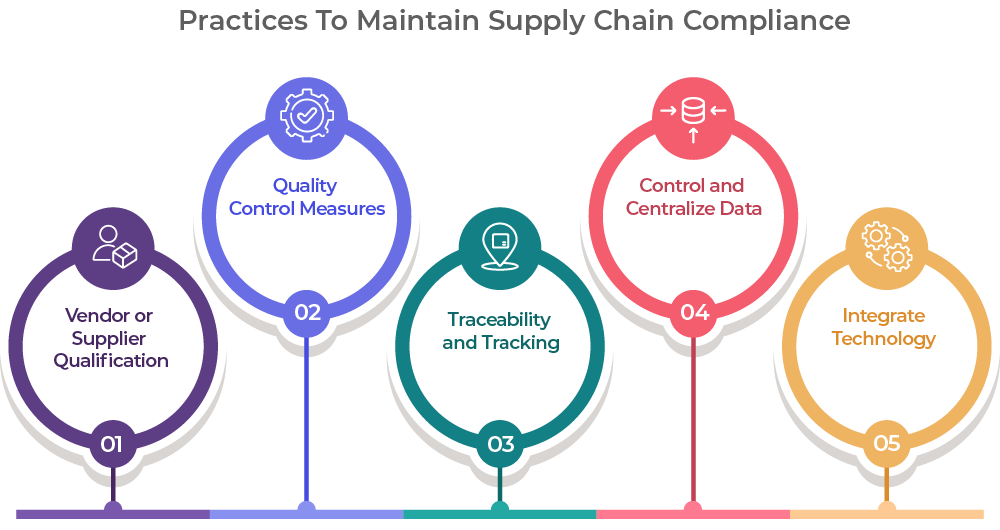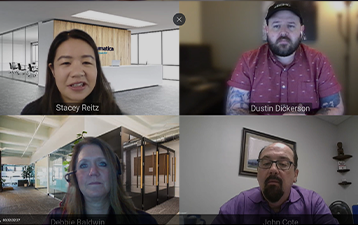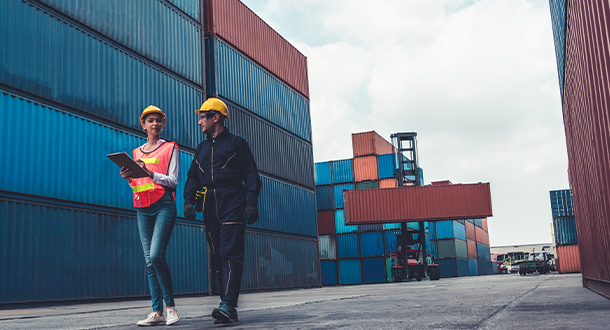What is Supply Chain Compliance?
There are rules and regulations that every manufacturing and distribution company needs to follow to stay compliant throughout supply chain operations, starting from the time of receiving raw materials to the shipment of finished goods.
Compliance ensures that companies operate ethically, responsibly, and legally while conducting their business activities.
Why Supply Chain Compliance?
Supply chain compliance encompasses various aspects such as labor laws, environment protection, product safety and quality, legal and ethical rules, and regulations by organizations to establish their credibility and authenticity.
Not adhering to industry, statutory, and regulatory compliance requirements can lead an organization into trouble and impact its reputation. Here are the critical components of supply chain compliance:
Legal
The rules and regulations of every country and state may differ. Companies need to align business operations with national and international laws, which include following customs duties, trade restrictions, and controls. It’s essential to meet legal compliance for smoother operations.
Ethical
Manufacturing companies that follow ethical practices responsibly safeguard their reputations. They should not be involved in illegal manufacturing practices, environmental harm, or social violations.
Quality Assurance
Ensure that the product meets compliance requirements in terms of quality and meets safety standards.
ESG (Environmental, Social, and Governance values) Performance
Manufacturing industries affect the environment and society in some way. Staying compliant can enhance ESG performance and avoid ESG risks by adhering to its rules and regulations. The ESG framework allows the evaluation of ESG performance throughout the supply chain to ensure they meet environmental laws and regulations, practice fair labor laws, and are transparent with stakeholders and the community.
Risk Mitigation
Staying compliant in the supply chain will help mitigate risk, avoiding chargebacks and heavy penalties. Compliance requirements help identify potential hazards, allowing companies to prevent them.
Customer Satisfaction
Meeting compliance requirements builds customer trust, which leads to customer satisfaction, as customers know that the company follows safety, legal, quality, and ethical practices.
5 Practices To Maintain Supply Chain Compliance
Manufacturers and distributors should closely monitor and assess suppliers or vendors to maintain supply chain compliance. They should also set standard processes for supplier verification, monitoring certifications, and agreements.
Every industry has different compliance needs. For instance, pharmaceutical manufacturers need to monitor the storage and temperature conditions of medications to prevent degradation. Chemical manufacturers need to ensure the safe handling of hazardous materials to avoid spillage, leakage, or contamination during transit. Every industry has to follow its own rules and regulations to stay compliant.
Here are five practices manufacturers and distributors can follow throughout the supply chain to maintain compliance.

1. Vendor or Supplier Qualification
While onboarding new suppliers, companies must qualify suppliers based on specific parameters, whether they are following required rules and regulations ethically or not, and prepare a checklist to qualify them. Ensure you communicate your company’s values and quality requirements.
Suppliers must align with your company’s ethical and quality standards. You must ensure that the suppliers hold the pertinent certifications required in manufacturing, such as ISO 9001 and FDA, and have valid licenses. Once suppliers are qualified, you must evaluate vendors based on established key performance indicators (KPIs). Continuous assessment will help gain insights into supplier performance to ensure that the supplier meets the required certifications and compliances.
2. Quality Control Measures
Quality control is a cornerstone for every manufacturer and distributor. To meet customer expectations, it’s essential that the product meets quality standards and is safe and reliable to use. Conduct necessary quality control tests at all stages, from receiving the raw material in the warehouse to shipments of the final product. This will help adhere to the product quality and safety standards as per industry norms.
A product must comply with industry rules and regulations before being sent to market. Conducting regular quality checks and inspections will help ensure compliance without discrepancies in supply chain operations.
3. Traceability and Tracking
Product traceability involves using information to determine the origin of the products, i.e., the raw materials or component parts used in the production process. Product Tracking involves tracking the movement of the product. It is more about knowing the logistical part or whereabouts of the product.
Product traceability and tracking facilitate the swift handling of product recalls when the defects are identified. You can take necessary actions by tracing the source of the product and tracking the product’s movement. After recalling, you can record and document the non-conformance (NC) to investigate the root cause of the defect. Once the root cause is identified, the company should take corrective and preventive actions (CAPA) to ensure the defect doesn’t occur in the future. Documenting these details will help align the business with the compliances, eliminating heavy chargebacks.
4. Control and Centralize Data
Use a document management system to centralize the data. Centralizing the data helps to increase visibility and transparency across multiple departments. Keep records and necessary documents of suppliers in a central location.
Documents related to suppliers include licenses, certifications, insurance, and registration details. Get notifications when these necessary documents expire, and keep the updated documents in your database. Select suppliers based on reliability, quality services, invoice status, etc. Selecting the right supplier and following stringent guidelines will help you operate smoothly.
5. Integrate Technology
Invest in the right technology to stay aligned with compliance requirements throughout the supply chain. Managing and complying with too many rules and regulations is complex. Manufacturers and distributors can integrate the Acumatica ERP system with the eWorkplace Apps quality management suite to meet compliance requirements, eliminating complexities and manual errors. Technology will help automate and improve regular communication with suppliers.
With the right solution, simplify the process to achieve compliance. This enhances efficiency and fosters greater accuracy and transparency across the supply chain. By leveraging the right technological solutions, businesses can stay agile in the face of evolving regulations, ensuring long-term success.
Conclusion
Maintaining supply chain compliance is not just a legal requirement but also a strategic imperative for businesses. It ensures ethical practices, quality assurance, risk mitigation, and customer satisfaction. By adhering to the practices outlined above, companies can not only avoid legal troubles and reputational damage but also build trust with stakeholders and enhance their overall performance in the market. Therefore, investing in supply chain compliance is an investment in the long-term success and sustainability of the business.
Acumatica, a modern cloud-based ERP system with the eWorkplace Apps quality management suite, is a robust solution for manufacturing and distribution companies to streamline their processes. By integrating the right solution, you can achieve the best practices to meet supply chain compliance and manage logistics.
Contact us to learn how eWorkplace Apps can help achieve compliance requirements.
Contact Us
"*" indicates required fields













